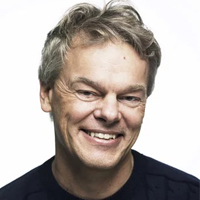Plenary Lectures

Dr. Edvard Moser
Nobel Prize in Physiology or Medicine 2014
Title: “Neural network dynamics in entorhinal cortex: Space and time”.
I will discuss recent advances in our understanding of the brain´s mechanisms for tracking space and time, brain functions that are generated not merely by integration of sensory inputs but rather by internal dynamics of the cortex. In mammals, space is mapped by complex neural networks in the hippocampus and medial entorhinal cortex. These brain areas contain specialized position-coding cell types, including the grid cells of the medial entorhinal cortex – cells that are active when animals are at specific locations that tile environments in a periodic hexagonal pattern. I will show how recent technological developments allow the dynamics of thousands of neurons to be monitored during behavior. Based on experiments with these new technologies, I will show how the dynamics of grid cells arises in interactions among large neural populations and how the joint activity of grid cells operates on a low-dimensional manifold with the topology of a torus, in agreement with continuous attractor network models of grid cells. I will show that this topology is present in rat pups before spatial experience, before eye opening and opening of ear canals, consistent with an innate or maturational origin of the manifold structure. I will finally show how time – in the form of codes for duration and order - is encoded across seconds to hours in the population state space of entorhinal neural networks and how specialized dynamics of the lateral part of entorhinal cell populations provides the brain with a neural code that uniquely expresses the passage of cumulative experience correlated with (but not identical to) time.
Supported by Human Frontier Science Program
